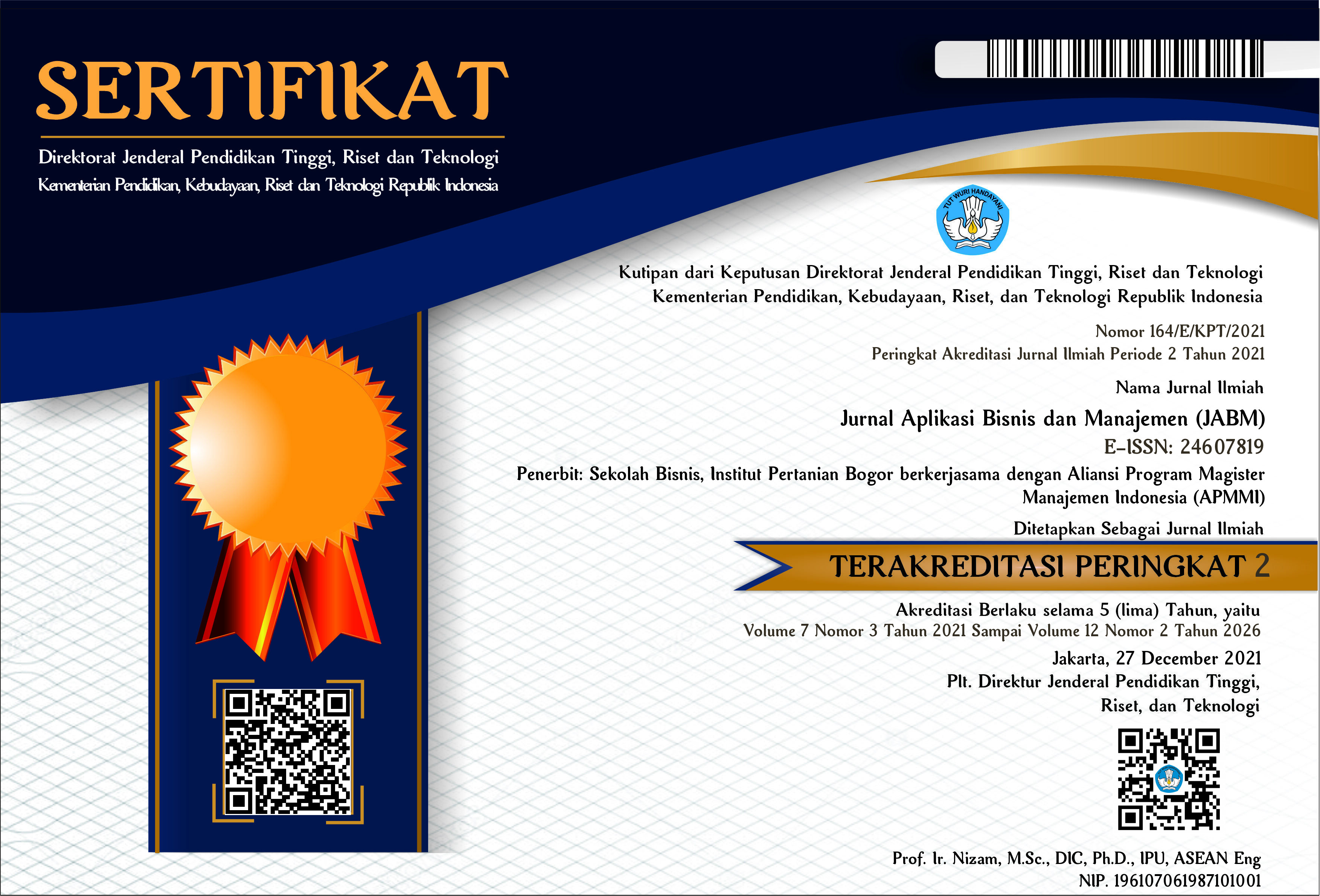Financial Literacy, Risk Perception, and Paylater Adoption: A TPB Analysis
Abstract
Background: Paylater, a service allowing users to defer payments with borrowed money, offers convenience but also potential risks.
Purpose: This study aimed to 1) assess financial literacy among millennials in Jabodetabek, 2) analyze how financial literacy and risk perception influence the intention to use Paylater, and 3) explore the impact of social influence and perceived control on this intention.
Design/methodology/approach: Descriptive analysis and SEM-PLS analysis were employed. Research model was developed from Theory Planned of Behavior with 4 variables: attitude, subjective norms, perceived behavioral control, and intention to use. Risk perception variables were used in the model, included performance risk, time risk, social risk, security risk, and financial risk. Financial literacy could be seen from 3 measurements including financial knowledge, financial behavior, and financial attitudes.
Findings/Result:The results showed that only 44.85% of respondents demonstrated strong financial literacy. Financial literacy itself did not directly influence the intention to use Paylater. However, perceived risks like performance delays, security concerns, and financial burdens negatively impacted attitudes towards using Paylater. Social pressure and perceived control over using Paylater positively influenced the intention to use it.
Conclusion: Financial literacy in millennial generation showed well literacy category. Financial literacy had no effect on the interest in using paylater. Meanwhile, performance risk, time risk, security risk and financial risk had a negative and significant influence on the attitude of using paylater, and there was no influence of social risk on the attitude of using paylater. In addition, attitudes, subjective norms, and perceived behavioral control had a positive and significant effect on the interest in using paylater.
Originality/value (State of the art): Paylater as an easy payment tool but has several risks, through the TPB approach combined with the risk perception variables and financial literacy can be used to analyze intention to use of paylater in the millennial generation.
Keywords: financial literacy, millennial generation, paylater, risk perception, subjective norm







